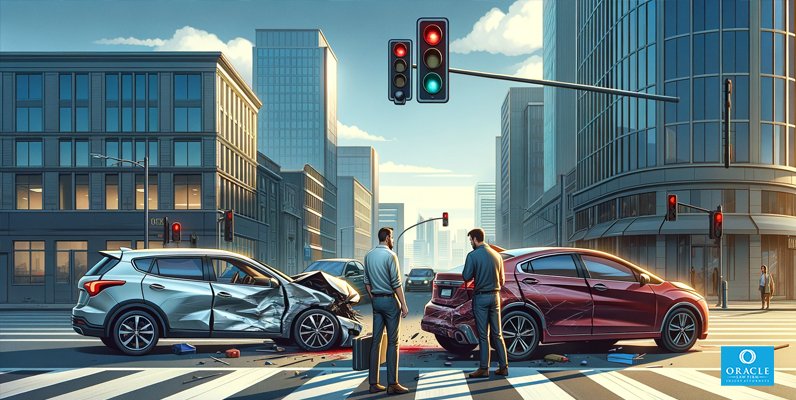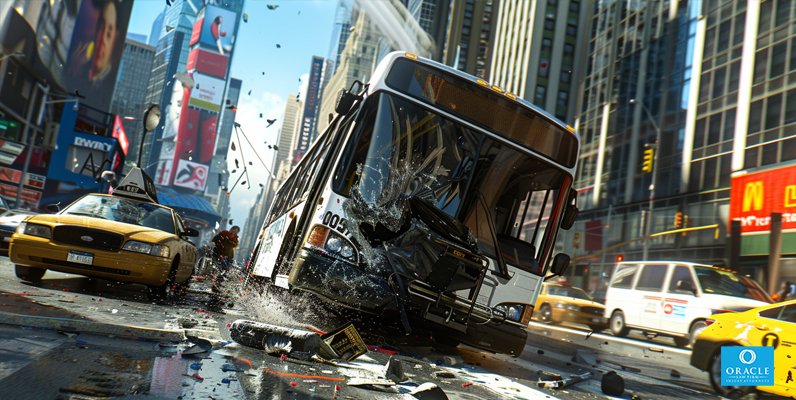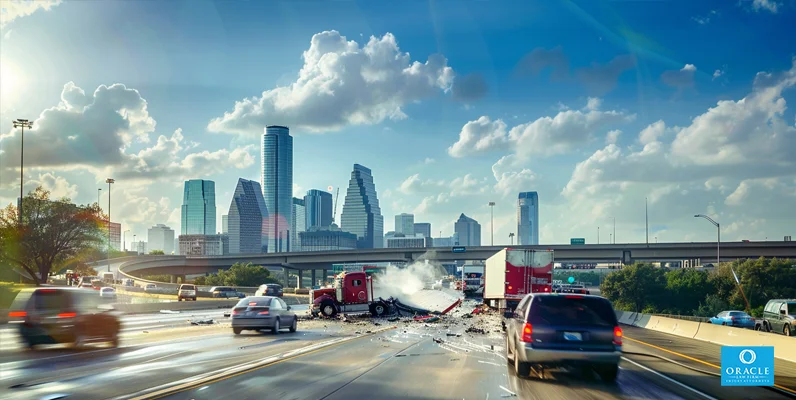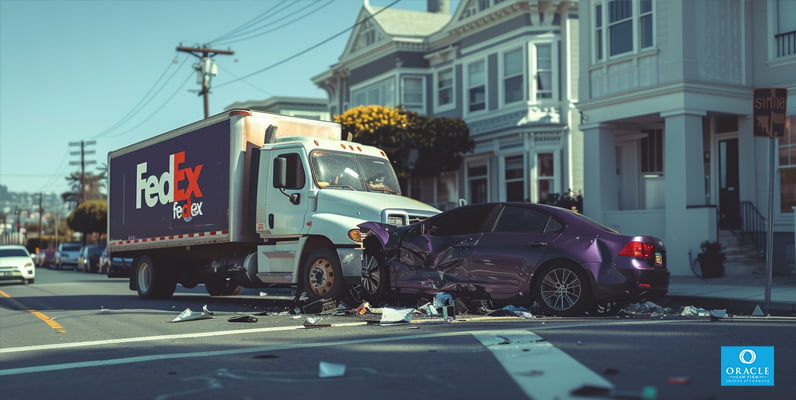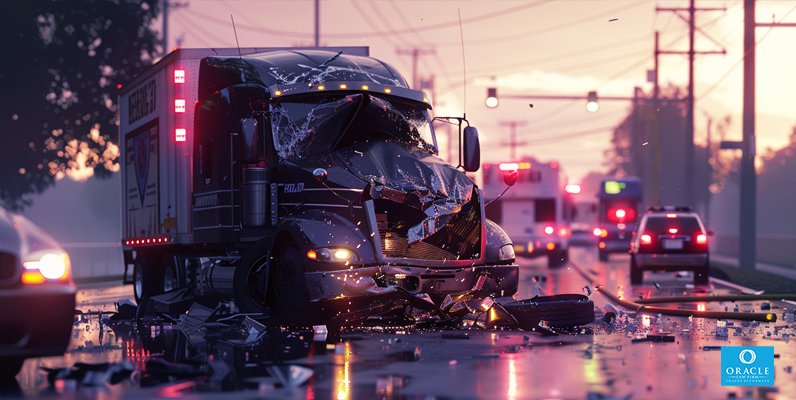Rear-end collisions, particularly rear-end collision scenarios, can leave you with more questions than answers. Who is liable? Are you injured? What should you do about insurance? This essential guide addresses your pressing concerns post-collision. We dissect liability, assess injuries, and explain insurance nuances to aid your decision to consult an accident lawyer while focusing on your right to recovery.
Key Takeaways
- Most rear-end collisions are attributed to negligence, such as distracted driving, tailgating, and failure to maintain a reasonable distance. However, liability can shift depending on sudden stops or malfunctioning lights.
- Rear-end collisions can result in severe injuries like whiplash, spinal injuries, and head trauma, even at low speeds, and victims should seek medical care and legal assistance promptly.
- Navigating insurance claims after a rear-end collision is complex, and legal representation can help victims effectively communicate with insurers, understand settlement offers, and maximize their recovery compensation.
Understanding Rear End Collisions: Causes and Liability
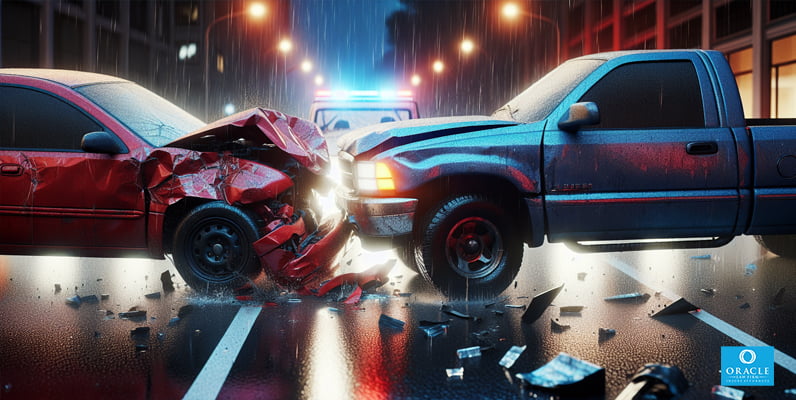
It’s a regular day, and you’re driving home, minding your business, when suddenly — bam! Your car lurches forward as the vehicle behind fails to stop in time. It’s a rear-end collision, and it’s more common than you may think. High on the list of culprits are distracted drivers, perhaps texting or changing the radio station, and those who tailgate, following too closely for safety. Legally, the onus is on drivers to maintain a reasonable distance from the vehicle in front. Failing to do so is not just dangerous; it’s considered negligent driving behavior.
Yet, it’s not always as cut-and-dry as it seems. While the rear driver is often presumed negligent in rear end accident, exceptions exist. For instance, if the front vehicle’s lights malfunction or if the vehicle suddenly reverses, the liability may shift. Grasping these subtleties is vital in dealing with the aftermath of a rear-end collision.
Factors Contributing to Rear-End Accidents
Regarding rear-end accidents, several factors can turn an ordinary drive into a nightmare. Poor weather conditions, such as rain, snow, or fog, can significantly reduce visibility, increase braking distances, and lead to an uptick in rear-end collisions. Mechanical issues, too, play a part. Faulty brakes, worn-out tires, or other vehicle malfunctions can prevent a vehicle from stopping quickly, leading to a rear-end crash.
Then there are the human factors. Drowsy drivers, those impaired by alcohol, or distracted drivers can all contribute to the likelihood of a rear-end collision. Misjudging following distances, not paying attention to the traffic ahead, or failing to anticipate sudden stops can all lead to unfortunate accidents.
Recognizing these factors is vital in assigning liability and in formulating prevention strategies.
Determining Fault in a Rear End Collision
In most cases, the law assumes that the rear driver in a rear-end collision is at fault – a rebuttable presumption of negligence. It’s a presumption that can be countered, but it sets the baseline for determining fault. So, when does this presumption get negated? Exceptions include scenarios where the front vehicle suddenly reverses, has malfunctioning lights, or merges incorrectly, providing inadequate space.
However, there are cases where fault may be shared or disputed, particularly if vehicle conditions, signals, or lights come into play. In such cases, applying breach of duty of care principles and expert analysis become necessary. In multi-car pile-ups, modified comparative negligence comes into play, allowing a claimant to recover damages as long as they are not more at fault than the other parties combined.
Awareness of these complexities aids in dealing with the aftermath of a rear-end collision.
The Anatomy of Injuries in Rear-End Car Accidents
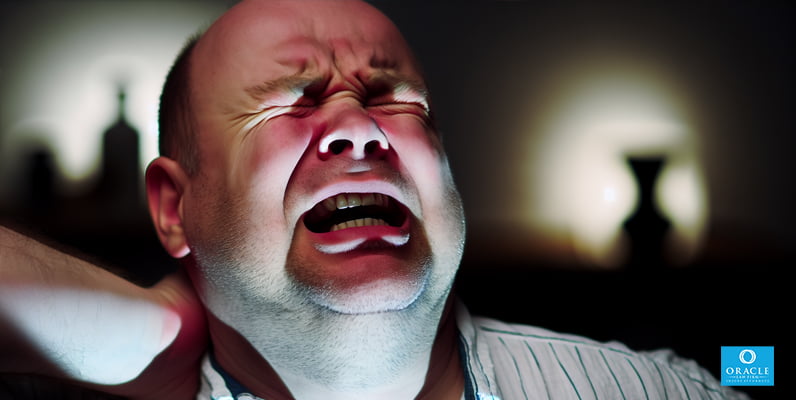
Picture this: you’re rear-ended at a traffic light, but it was a low-speed collision. You think you’re fine because, after all, it was just a minor bump, right? Well, that’s where common misconceptions can lead us astray. Low-speed rear-end accidents, even those occurring under 10 miles per hour, can cause significant injuries and serious concerns like whiplash, muscle strains, and herniated discs. A low-speed car accident like this can have long-lasting effects on your health.
The risk of whiplash injury is greater at low speeds, and just a 7-mile-per-hour collision can result in injuries necessitating medical and physical therapy. Around 20% of individuals involved in rear-end collisions experience whiplash, reflecting a significant portion of these accident victims. Even low speed side-impact crashes can lead to life-altering, long-term injuries for the victims. Underestimating the potential harm from low-speed rear-end collisions can be a grave mistake.
Neck and Whiplash Injuries
The sudden jolt of a rear-end collision can cause your neck to jerk back and forth, leading to what we commonly know as whiplash. Whiplash symptoms include neck and back pain, tingling, stiffness, or swelling. In addition, they may also lead to headaches. Muscle spasms can cause significant pain due to inflammation and muscle tension following neck injuries from car accidents. You might also experience severe pain, tingling, and numbness due to pinched nerves in the neck.
The injuries can be diverse, affecting various parts of the cervical area, including vertebrae, intervertebral discs, facet joints, and tissues like ligaments, muscles, and nerves. A collision can lead to a herniated disc when the discs in the cervical spine slip, rupture, herniate, or bulge, which may manifest as neck or arm pain and/or numbness. The extent of these common injuries further underscores the importance of seeking appropriate medical care and legal assistance following a rear-end collision.
Other Common Physical Injuries
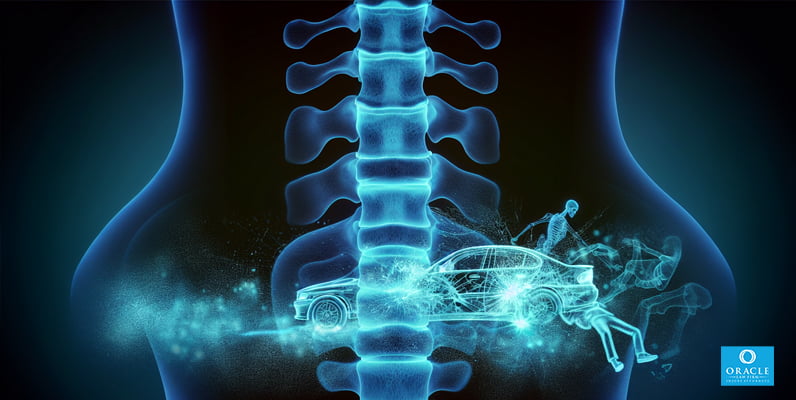
Beyond whiplash, other physical injuries can result from rear-end collisions. Severe spinal injuries such as neck fractures, spinal stenosis, spinal fractures, and vertebral compression can occur, potentially leading to paralysis, pain, tingling, muscle weakness, and reduced spinal mobility. Soft tissue injuries and musculoskeletal systems can also suffer, with sprains and strains of ligaments and tendons, as well as overarching back pain, often necessitating medical care.
Furthermore, rear-end collisions can cause the following injuries:
- Closed head injuries like cerebral contusions and concussions, due to the brain impacting the inside of the skull, leading to bruising, swelling, or bleeding without obvious external signs
- Bruises, cuts, and gashes from the impact
- Shoulder impingements
- Specific knee injuries such as torn ligaments
Recognizing the potential injuries highlights the need to seek medical treatment immediately, even in seemingly minor rear-end collisions.
Navigating Insurance Claims for rear-end collisions
Navigating the world of insurance claims following a rear-end collision can feel like entering a labyrinth. With insurance companies often offering far less than the case is worth initially, it’s easy to feel like you’re in a David vs. Goliath situation. Accepting a settlement offer might seem tempting, but did you know that once you accept a settlement offer, you are not permitted to file an additional claim if injuries are more serious? In addition, agreeing to a settlement offer for the physical damage to your car means that the insurance company will not be held further responsible.
You might feel compelled to communicate with the other driver’s insurance company, but you’re not legally obligated. If you do communicate with them, you need to tread carefully. Any statements made can influence settlement outcomes, with seemingly innocent claims like you are ‘fine’ or inadvertently implying responsibility for the accident being used against you. This is where having legal representation can prove invaluable, particularly when dealing with severe injuries.
Dealing with Insurers After an Accident
While it might seem daunting, dealing with insurers after an accident can be navigated effectively with the right knowledge and support. First, you should know that while you’re more likely required by state laws and insurance policy to communicate with your insurance company, law enforcement, and the other driver at the scene, you’re not legally obligated to speak with the other driver’s insurance company.
If you choose to communicate with the other driver’s insurance company, remember to be cautious about what you say, as any statements can influence settlement outcomes. This is where enlisting the assistance of an attorney can be pivotal, especially when injuries from an accident are severe. They’re skilled at negotiating with insurance companies, often offering lower settlements to those without legal representation.
Understanding Settlement Offers
Settlement offers can feel like a complex puzzle, but understanding the key factors can clarify the picture. Settlement amounts are directly influenced by the type and severity of the victim’s injuries, with more serious injuries and conditions leading to higher settlements due to the associated costs of long-term medical care and possible lasting impairments. The settlement value will also be affected by determinations of fault and liability. In cases where the victim is partially at fault, their entitled compensation may be diminished in line with their degree of responsibility for the accident.
The role of a car accident lawyer can not only speed up the settlement process. Still, it can also contribute to securing a more substantial compensation package for the victim and their family. Insurance adjusters might try to undervalue a claim by urging quick settlements or getting statements from the victim that could imply fault, impacting the overall settlement offer. As such, grasping how settlement offers function is crucial in securing the rightful compensation.
Legal Support: When to Consult a Car Accident Attorney
Getting into a rear-end collision can feel like your world has been turned upside down. Amid the medical concerns, dealing with insurers, and navigating legalities, it’s easy to feel overwhelmed. This is where a car accident attorney can step in to steady the ship. An attorney is crucial in obtaining deserved compensation and proving fault in rear-end collision cases. Their legal expertise is invaluable in handling the complexities of seemingly straightforward rear-end collisions, such as deciphering fault and navigating no-fault state laws.
Attorneys can provide several important services after a rear-end collision, including:
- Managing communications with the other driver’s insurance company
- Presenting evidence for claims
- Increasing the chances of obtaining a favorable settlement
- Providing legal representation and guidance throughout the process
Hiring an attorney can be a lifeline when navigating the aftermath of a rear-end collision.
Evaluating Your Personal Injury Case
If you’ve been injured in a rear-end collision, your personal injury case is more than just a legal claim—it’s a critical element of your recovery process. A strong personal injury case is contingent on presenting evidence substantiating the other driver’s negligence. Calculating the full scope of damages often requires legal expertise, as it encompasses tangible economic losses, such as medical bills and lost wages, and intangible non-economic damages, including pain and suffering.
The extent of injuries sustained significantly impacts the level of compensation that can be negotiated with insurance adjusters or awarded in a lawsuit. Complex personal injury cases, especially those entailing severe injury or catastrophic injuries, necessitate a high degree of legal acumen to manage and ensure fair compensation effectively. An attorney’s presence can prove beneficial in assessing your personal injury case and championing your rights.
The Role of an Attorney in Maximizing Recovery
An attorney’s role in a personal injury case extends far beyond merely filing the case. Their knowledge of the legal system is essential in coping with the difficulties encountered in a case, such as managing injuries and extensive paperwork. Attorneys have the expertise to navigate complex laws, regulations, and procedural codes to ensure the best possible outcomes for their clients. They can determine fault with evidence and expert consultation, thus steering the securing of just compensation for clients.
The presence of legal representation increases the settlement value as insurance providers recognize that attorneys may litigate if necessary, ensuring claims are taken more seriously. Lawyers advocate for their clients to receive the maximal damages possible and are adept at placing a value on non-tangible losses like pain and suffering. Studies reveal that victims of injuries with attorneys generally obtain higher settlement offers than those without legal help.
An attorney can play a vital role in optimizing recovery after a rear-end collision.
Prevention and Safety Measures to Avoid Rear-End Crashes

While understanding your rights and recovery options after a rear-end collision is valuable, prevention is always better than cure. Preventing rear-end collisions involves adhering to safe driving practices. Maintaining a safe following distance, typically a three-second gap for passenger vehicles and a six-second gap for large trucks, is crucial. Ensuring you’re driving at a speed safe for the current road and weather conditions can ensure adequate reaction time and stopping distance.
To prevent accidents and ensure safe driving, follow these tips:
- Avoid driving when drowsy or fatigued. Take necessary breaks and ensure adequate sleep to maintain alertness.
- In an emergency, avoid parking on the side of the road unless in a designated area. Use hazard lights and warning triangles to alert other drivers.
- The essence of prevention is rooted in proactive, safe driving practices.
Defensive Driving Strategies
Defensive driving is a proactive approach to ensure safety on the road. Maintaining a safe following distance allows drivers more time to react to sudden stops of the vehicle ahead, reducing the risk of a rear-end collision. Avoiding distractions, such as cell phones and other in-car devices, is also crucial for maintaining awareness on the road.
Adjusting mirrors and seats appropriately ensures better visibility and control, which is vital for defensive driving. Staying aware of traffic signals, brake lights from other cars, and road conditions can help identify risks promptly and reduce the chances of a rear-end collision. Hitting the road equipped with these defensive driving strategies can notably minimize the risk of rear-end collisions.
Vehicle Safety Features
With technological advancements, vehicles today have many safety features to prevent rear-end collisions. Forward-collision warning systems utilize sensors to detect potential collisions ahead and alert the driver, while automatic emergency braking can initiate braking automatically to prevent an impending crash.
Additional safety features include:
- Lane departure warnings that alert drivers when the vehicle begins to drift out of its lane
- Blind-spot detection systems that monitor areas of the vehicle that are difficult for the driver to see
- Telematics systems and onboard cameras that assess driving patterns, vehicle speed, and location to encourage safer driving and mitigate the risk of rear-end collisions.
These contemporary vehicle safety features, including advanced steering wheel designs, contribute substantially to preventing rear-end collisions and enhancing road safety, especially when vehicles are equipped with these features.
Summary
Navigating the aftermath of a rear-end collision can be a complex process, fraught with legal intricacies, insurance negotiations, and medical treatment concerns. Understanding the causes and liability, recognizing the potential injuries, and knowing how to handle insurance claims are all crucial aspects of this process. Legal support can be invaluable in securing rightful compensation and navigating these complexities. While prevention is the best approach, being armed with knowledge and understanding your rights and recovery options can make a world of difference when dealing with the repercussions of a rear-end collision. Stay informed, stay safe, and remember, you’re not alone in this journey.
Frequently Asked Questions
What is the meaning of rear-end collision?
A rear-end collision occurs when one vehicle hits the vehicle in front of it, often due to the rear driver driving too closely to the front driver. Always maintain a safe following distance to prevent these accidents.
Who is usually at fault in a rear-end collision?
In rear-end collisions, the driver in the back is usually found at fault due to the legal duty to maintain a safe following distance and stop safely. It’s best to consult with an experienced attorney to determine liability.
What happens to the body after a rear-end collision?
In a rear-end collision, the body experiences enormous pressure on the spine, neck, and head, which can damage the organs, muscles, and soft tissue. This force can cause rupture or severe damage, especially at high speeds or low-impact collisions.
Who gets hurt worse in a rear-end collision?
The rear-ended driver tends to get hurt worse in a rear-end collision, especially when their car is stationary, and the rear vehicle is in motion.
What are the injuries in a low-speed rear-end collision?
In a low-speed rear-end collision, injuries to the neck, shoulder, back, chest, and head can occur, with whiplash being the most common injury. Take care to seek medical attention if you experience any symptoms of these injuries.
